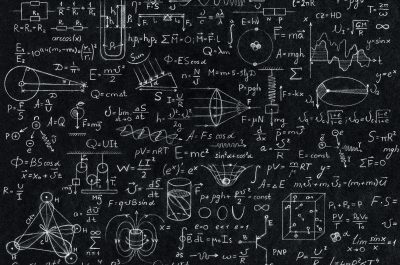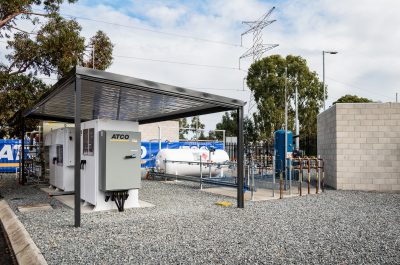Overcharge(d) Claim: Have networks earned a $10 billion ‘super profit’?
Extraordinary claims require extraordinary evidence, as Carl Sagan observed. Claims in an Institute for Energy Economics and Financial Analysis report last week that Australian electricity network customers had been overcharged $10 billion since 2014 certainly meet the first part of the test – but what about the second?
Unfortunately, while headline grabbing claims are made in the report, logic and evidence do not support these claims.
Finding the ‘missing’ $10 billion – first…assume a can-opener
The Institute for Energy Economics and Financial Analysis report seeks to establish that ‘supernormal profits’ have been earned by many electricity networks. It does so, however, in an unusual way.
The report examines differences between Australian Energy Regulator (AER) approved revenue allowances and a constructed measure of ‘actual’ costs estimated by using regulatory returns data. Critically, it effectively assumes every dollar recovered in charges that exceeds AER forecast costs made in uncertain market conditions over an eight-year period automatically represent super profits from a flawed regulatory model.
The problem with this approach is that it implicitly assumes that any regulator can perfectly forecast not just thousands of different future costs many years into the future, but also all the possible ways in which these costs might be able to be reduced by more than a dozen different electricity networks.
Unless this unrealistic condition is met, applying the methodology used in the report will likely show illusory ‘super profits’, or alternatively, just as illusory windfall losses.
Clearly, no regulator can achieve this unrealistic assumption of omniscience – which is why incentive-based regulation is widely applied to energy networks globally. Incentive regulation sets prices that customers pay based on estimates of efficient costs, so that regulated firms do not earn any additional profits unless they outperform these benchmarks.
These benchmarks also include assumed future efficiencies based on past experience, and the benefits of firms beating the benchmarks are shared with consumers over time. It is this process which drives the efficiencies and lowered costs the report tracks.
The report sets as a goal for the regime revenues matching costs over time. This sounds reasonable, except that many future costs are not known – and work by networks to deliver services more efficiently each year under incentive regulation is part of the process designed to uncover these answers on costs.
A claim that customers have been ‘overcharged’ $10 billion simply assumes both that these answers were always perfectly available, and that they could be captured without the provision of any incentives on businesses to keep lowering costs.
In other words, it’s the equivalent of the joke about an economist stranded on an island with only tinned food who solves the problem by assuming a can-opener.
Examining the sources of excess returns – gearing and compounding errors
A further significant problem is the report’s analysis of the components of the claimed supernormal profits.
The two largest elements of these ‘excess returns’ are identified as debt or interest rate costs, and the impact of business gearing (e.g. the use of debt funding). Together these represent over half of the claimed excess return.[i]
Yet there appear to be fundamental mistakes in the gearing analysis which accounts for around $2 billion of the claimed over-recovery. Networks may choose to adopt different gearing from that assumed by the regulator. They bear both the costs and risks, or benefits, of these individual commercial decisions.
Customer network charges are based only on the gearing assumed by the regulator. It is simply not correct, therefore, to suggest that network charges have been higher due to this factor, or that the framework has delivered any above normal profits through gearing assumptions.
Some firms may have derived additional returns from assuming greater risks in their gearing decisions, just as in any market – but importantly customers have not borne any additional risk or charge.
Debt costs – from fumbled facts to failed analysis
The single largest component of claimed ‘super profits’ is debt financing costs, which the report identifies as a ‘key contributor’ to supernormal profits.
The outperformance of these interest costs (identified at $3.5 billion) is claimed to be made up of several different elements.[ii] In each case, however, it is hard to conclude that they represent a source of super profits.
The IEEFA work starts by making a series of erroneous claims in assessing debt cost issues, which appear to reflect a fundamentally mistaken understanding of the actual approach adopted by the regulator.
The report claims:
Instead of using actual debt financing cost data from RIN returns, an index is constructed, labelled the Energy Infrastructure Credit Spread Index (EISCI). The index is constructed by examining the debt financing cost for benchmark efficient entities. It uses a blend of A and BBB debt data from third-party debt providers and makes no reference to regulated network financing cost data.[iii]
Remarkably, for a report which purports to establish that others have failed to make empirical verifiable claims, every single sentence of this paragraph is verifiably factually incorrect.
The index referred to in the first sentence is constructed using actual debt financing data from the regulatory information notices referred to. The EICSI index is constructed by using observed debt financing costs of actual network firms – it is not a benchmark index as suggested. The index uses actual debt data of network firms, not third-party debt providers.[iv] The further claim that this data was not referred to in the prior 2018 rulings is also incorrect – reference has been had to actual debt cost data in both decisions.[v]
From an unsafe grounding in the facts, the report then proceeds to conclusions that are just as precarious – asserting that debt financing costs are likely to be structurally overestimated.
Using its index of actual reported debt costs, the AER has previously reported a gross 18 basis point (0.18%) outperformance of cost of debt over 2014 to 2021.[vi] Applying this raw figure would suggest an outperformance of less than a quarter of what the report indicates, indicating a potential serious case of flawed estimation is present. Even more problematically for the analysis, just as in the case of gearing, much of this ‘outperformance’ has arisen from business decisions to depart from the benchmark approach, a choice with no impact at all on network charges – as the firm bears all of the risks and costs of such choices.
Once these types of individual business choices are accounted for, recent analysis and expert roundtable sessions have established that the AER’s current approach to debt estimation closely matches actual debt costs – to within 4 basis points (i.e. 0.04%), with no statistically or economically significant outperformance. Recent evidence is of an even narrower gap.[vii]
Hard to credit – reviewing the claims on assumed credit ratings
A further part of the ‘overcharging’ is claimed to result from the credit rating assumed by the regulator.
It is stated as fact that credit ratings used in regulatory decisions estimating debt costs do not closely correspond to actual ratings.[viii] This is not correct, as the AER’s recent detailed draft Rate of Return ruling makes clear. In the ruling the BBB+ rating is maintained based on a review of actual ratings, and this setting matches the industry median observed rating since 2013.[ix]
These are by no means the only errors made the report.
They do, however, indicate that in the case of the two largest components – making up the majority of the claimed over-charging – the analysis of what is occurring simply doesn’t connect with known facts.
Ghost in the machine – divide by the number you first thought of?
These fundamental methodology problems with reaching the claimed ‘super profit’ figure then go on to infect and undermine the reports’ further muddled analysis about the linkages between profits and productivity.
Having reached a profit margin estimate that largely reflects a set of individual financing and gearing choices of electricity networks over time not actually impacting network charges – e.g. almost nothing economically meaningful – it is unsurprising that the analysis can’t find any systematic relationship between profits and productivity. The one factor it does not appear to consider is whether this absence of a relationship is because it has started with a largely meaningless input.
By contrast, and as the AER has highlighted in response to the claims of the report, the AER has been carefully examining the performance of Australia’s incentive-based regime for the past year, including the question of the links between productivity improvements and the right level of efficiency rewards. It has found consumers are benefiting significantly from the operation of current incentive schemes.
Matching extraordinary claims to the challenging new energy reality
A claim that electricity prices are $10 billion higher than they need to be due to regulatory errors or generosity is a powerful, attention-grabbing claim.
Yet before treating this claim as fact, reference to the reality of current network investment, rulings and prices would provide some clues that something is amiss.
Network capital expenditure is currently sitting near decade lows and the most significant recent major transmission investment project to connect and share new renewable energy sources has only proceeded with financing support from the Commonwealth government-owned Clean Energy Finance Corporation. Recent international studies of comparative regulatory returns show Australian network return on equity allowances are lower than all but one other regulatory jurisdiction examined across US, Europe and New Zealand.
Needless to say, all of these inconvenient facts are hard to square with the central claim in the report that inflated returns on investment are on offer.
Indeed, the unspoken and unanswerable mystery at the heart of this gripping ‘whodunnit’ style narrative fiction is: if all of these remarkable intertwined claims were true, why aren’t networks spending more? The fact they have not been should give pause.
The reality is simpler, and the challenges are so critically important that they should draw the community to a more sober evidence-based debate.
Customers in 2021 were charged less for network services than they have been at any time since 2010, but both the costs of delivering the energy transition customers demand, and external environment mean that a decade of falling average network prices may be ending.
Instead, there is a just visible pathway to a different energy system featuring abundant but interconnected remote and customer-owned renewables and storage. That will bring different costs than the past, but ultimately will help better insulate Australian customers and households from energy price volatility.
Walking the pathway will require long-term perspectives and more careful examination of extraordinary claims made, and the evidence, than has been demonstrated in the case of the IEEFA report.
[i] IEEFA Regulated Electricity Network Prices Are Higher than Necessary, October 2022, p.47
[ii] IEEFA (October 2022), p.48
[iii] IEEFA (October 2022), p.49
[iv] AER Energy network debt data – Final working paper, November 2020, p.10
[v] AER Rate of Return Instrument– Explanatory Statement, December 2018, p.300
[vi] This is ‘raw’ measure which does not take into account the different terms or value of individual firm debt instruments, and so does not represent a reliable basis on which to measure outperformance. Its indicative application in the following discussion represents the most favourable potential assumption for the analysis in the IEEFA report.
[vii] AER Draft Rate of Return Instrument – Explanatory Statement, June 2022, p.212-213
[viii] IEEFA (October 2022), p.9 and p.64
[ix] AER Draft Rate of Return Instrument – Explanatory Statement, June 2022, p.217

